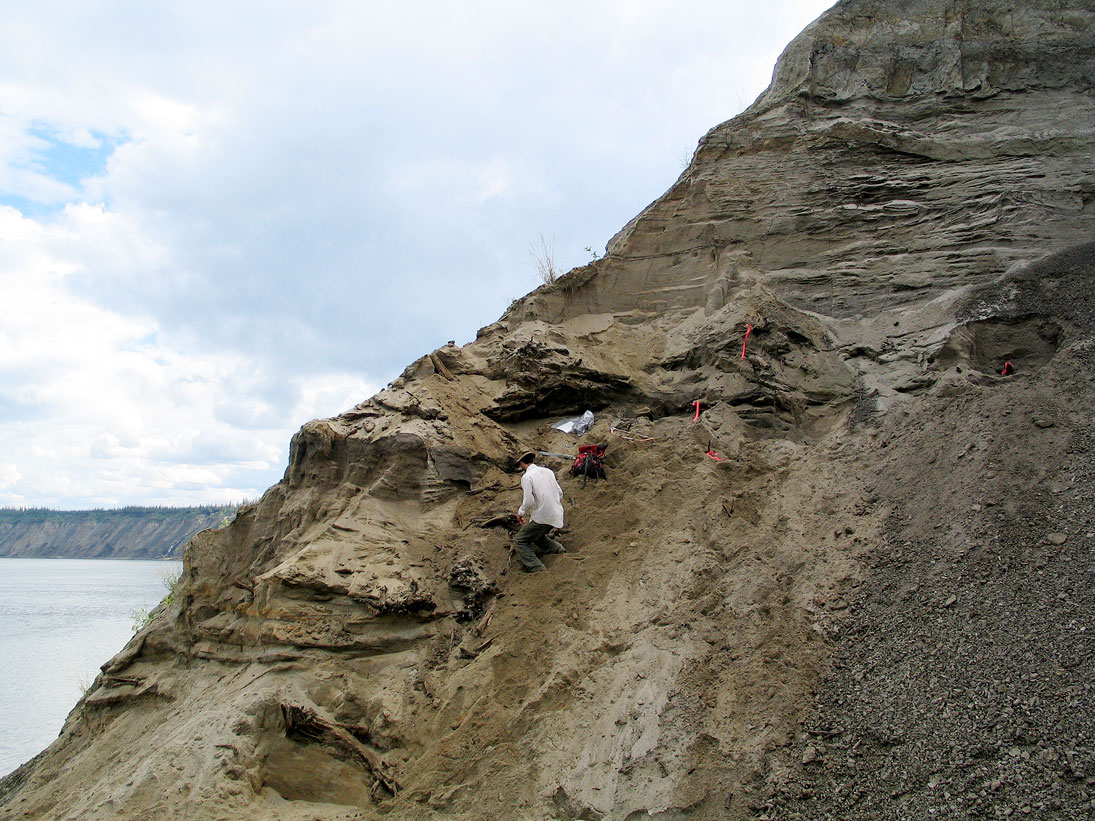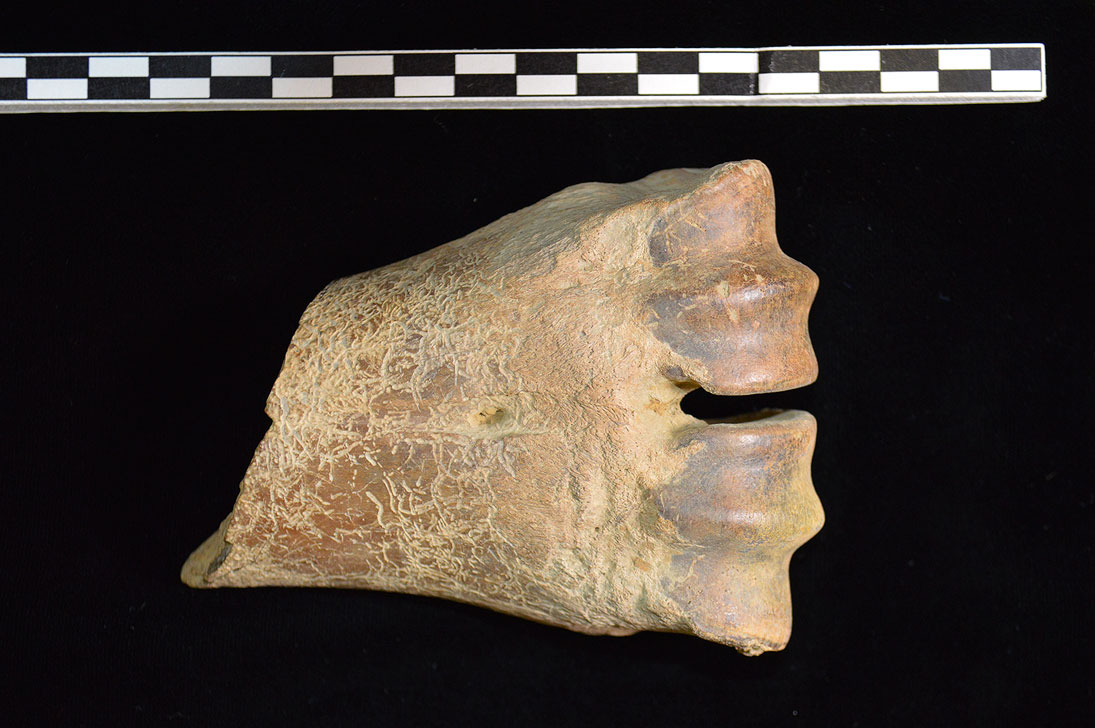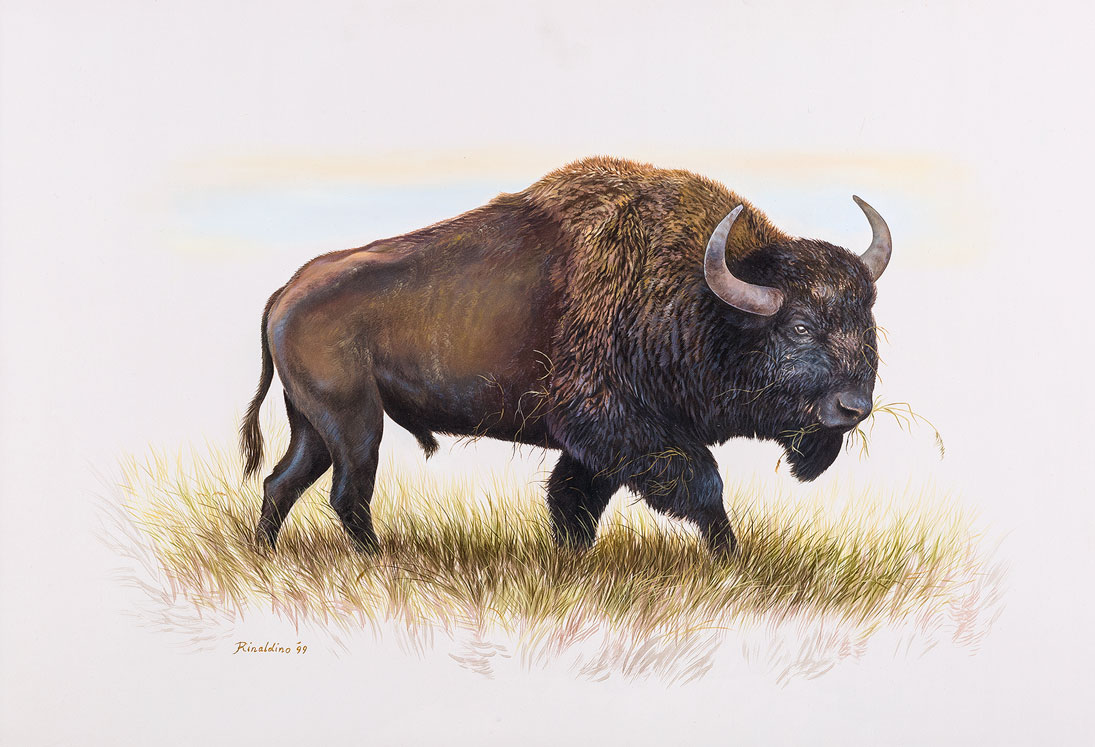
Photo by Photo Submitted
EXPLORING THE DIG – Alberto Reyes works on the dig near Old Crow along the Porcupine River, where the fossil was found. Photo courtesy BRITTA JENSEN

Photo by Photo Submitted
EXPLORING THE DIG – Alberto Reyes works on the dig near Old Crow along the Porcupine River, where the fossil was found. Photo courtesy BRITTA JENSEN

Photo by Photo Submitted
HISTORY UNEARTHED – The steppe bison fossil was discovered in the Ch’ijee Bluff on Vuntut Gwitchin Settlement Land. Photo by GRANT ZAZULA

Photo by Photo Submitted
FROM ANCIENT TIMES – The Yukon government provided this artist’s depiction of the steppe bison. Painting by GEORGE 'RINALDINO' TEICHMANN
The DNA from a steppe bison fossil discovered in the Ch’ijee Bluff on Vuntut Gwitchin Settlement Land
The DNA from a steppe bison fossil discovered in the Ch’ijee Bluff on Vuntut Gwitchin Settlement Land has played a central role in determining when the large ice age mammal first arrived in North America and its subsequent evolution on the continent.
The 130,000-year-old fossil, found in 2006, is the oldest reliably dated bison in North America, the Yukon government said Tuesday.
Prior to this discovery, scientists had little reliable information on when bison first migrated eastward across Beringia to North America.
When it was first discovered, DNA could not be extracted from the fossil.
Advances in science have meant that DNA can now be taken and compared with genomes from other bison fossils from Siberia and North America.
Using these comparisons, researchers constructed an age-calibrated genealogy that sheds new light on the bison’s North American invasion and evolution.
The bison fossil is part of the Vuntut Gwitchin First Nation collection and is housed in the Arctic Research Facility in Old Crow.
“Old Crow has a rich and fascinating ice age heritage and the fossils found in the area continue to bring new insights into the territory’s ancient past,” Tourism and Culture Minister Jeanie Dendys said in a statement.
“(The) Yukon government is pleased to work with the Vuntut Gwitchin First Nation to discover and preserve these unique and invaluable traces of a long-ago world.”
The bluffs and banks along the Old Crow River are the richest sources of ice age fossils in North America.
Scientists estimate that over 80 per cent of the ice age mammal fossils in Yukon belong to steppe bison.
This species survived through the major extinction event at the end of the ice age and small populations persisted in Yukon until as recently as 400 years ago.
“Vuntut Gwitchin have ancient stories about co-existing with giant animals in the Old Crow area for millennia,” said Vuntut Gwitchin First Nation Chief Bruce Charlie.
“This significant steppe bison research is the result of our positive long-term working relationship with researchers and community members.”
The new findings are the subject of an article entitled “New fossil and genomic evidence constrains the timing of bison arrival in North America”. It was recently published in Proceedings of the National Academy of Sciences, a prominent science journal.
The authors are University of Alberta’s Duane Froese and others, including Yukon government palaeontologists.
In order to encourage thoughtful and responsible discussion, website comments will not be visible until a moderator approves them. Please add comments judiciously and refrain from maligning any individual or institution. Read about our user comment and privacy policies.
Your name and email address are required before your comment is posted. Otherwise, your comment will not be posted.
Comments (1)
Up 3 Down 2
bisonjump on Mar 23, 2017 at 7:11 pm
This fossil appears to pre-date the speculated crossing of humans by 105000 years.
How do you explain that?